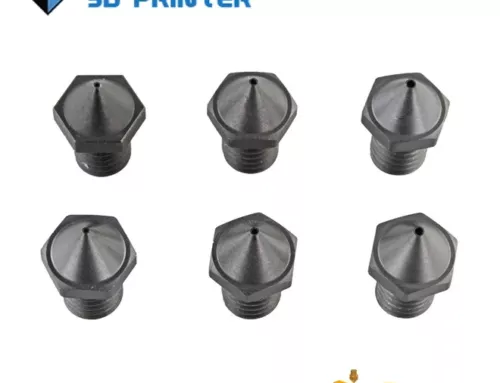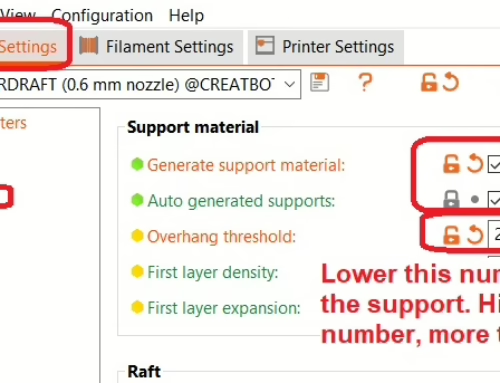How to 3D Print Carbon Fibre
First a quick intro
All Carbon Fibre filaments are actually made by adding Carbon Fibre (abbreviated CF) into a base plastic.
For eg, PLA. There is a proportaion (or percentage) of Carbon Fibre inside the 3d printer filament which is still mainly plastic.
Most cheap Carbon Fibre filaments are simply PLA with just around 5% CF inside them.
What does 3d Printing Carbon Fibre actually mean?
When you ‘Print’ CF, what you are actually 3d printing is NOT the CF itself, but rather the plastic that is bonding all that CF together.
This plastic is referred to as the base polymer, & it is absolutely crucial that to setup your print for this base polymer in mind.
For this reason, it is VERY important to remember that 3d printing a Carbon which is based on PLA, is really just PLA.
The negative properties of the base polymer will hold a lot of bearing on characterstics that the fibres can not control.
The biggest ones are temperature, & strength. PLA will get soft & so will the Fibres with it.
Do not print carbon & expect miracles if the base polymer is inferior.
Before you start, please remember to dry out the rolls in an oven at 70C for at least 4 hrs before 3d printing.
Eeven with a brand new roll, drying often helps, especially for Nylon 6 (PA6) based filaments
How to best 3d print with Carbon Fiber
Remember that the base polymer is what guides the initial settings, like extruder temperature & build plate temperature.
We will discuss settings for our Nylon 6 Reinforced Carbon Fibre & Nylon 12 Carbon Fiber filament as these 2 are currently the most common Carbon Fiber Filaments used in FDM 3d printers.
Use with 0.6mm nozzles around 270C Head Temperature with at least 85C bed temperature.
Print Speed 30-40mms @ 0.2mm layer height (200 microns)
Turn off retraction, but add some with experimentation.
Do not try to print fatter extrusion lines than what your nozzle diameter is.
The interlayer adhesion of a 3d printed part is crucial. Carbon Fibers do not stick to each other between layers.
So it is critical that this bond between layers not be weakend by the 20% fibers added.
Sometimes, you may find that when 20% of the material is fibre, the layer formed shows poorer surface finish, & may even start delamination.
Delamination means the layers might peel off if you put too much force on them, especially at higher temperatures.
So to avoid this happening, you have to push a greater amount of polymer than you normally would for the same part.
This allows you to compensate for the otherwise reduced amount of polymer being pushed out when printing.
So you may need to over extrude the material slightly to compensate for the carbon fibres inside.
Over extrusion is also called extrusion multiplication, flow rate control etc.
These are set as percentages, or as decimals. You want to overextrude only as needed.
Start off at 10%. This means you set the extrusion rate to 110% or to 1.1 if its a multiplier.
Experimentation is key, & inferior 3d printers will not be able to handle this.
It can choke the machine quickly, so do this only as needed & increase temperatures slowly when you over extrude.
How much stronger is CF really?
For CF to be strong, it needs to be woven like a fabric. It is also ideally layered further with a stronger glue, like a epoxy based resin.
3D Printed CF out of standard FDM 3d printers is NOT woven. It is laid out layer by layer.
So it looses some of the advantage it has when compared to its traditional implementation.
However, it still improves the surface abrasion resistance, impact resistance, & rigidity of the parts greatly.
So it makes for stronger parts compared to the base polymer.
Hope this helped you learn more on how to 3d Print with Carbon Fibre.
Happy 3d Printing!





